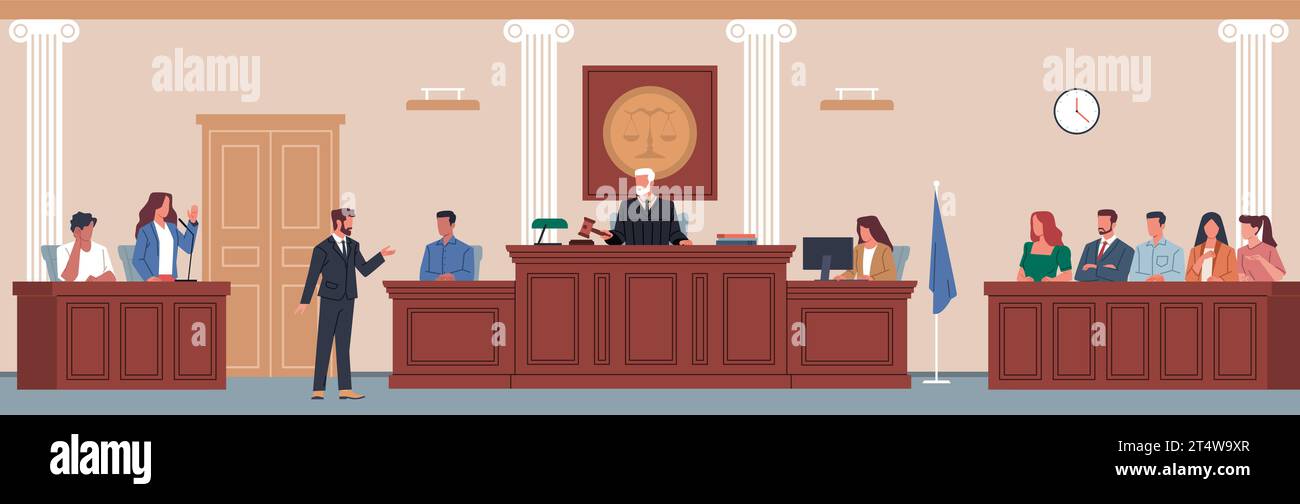Trial Presentation Providing Effective Case Information in Court
Trial Presentation Providing Effective Case Information in Court
Blog Article
Mesmerize the Court: Essential Aspects of a Powerful Test Presentation
Essential components such as recognizing the target market, crafting an engaging story, and grasping verbal and non-verbal communication are vital parts of an effective discussion. As these variables link, they create a cohesive method that not only educates but likewise engages jurors on several levels.

Recognizing Your Audience
Comprehending your target market is a pivotal aspect of efficient test presentation. A successful presentation depends upon the capacity to understand the demographics, worths, and proneness of jurors. This understanding educates just how disagreements are mounted, evidence exists, and emotional charms are crafted, guaranteeing that the message resonates with the jurors on a personal level.
Research study shows that jurors come from diverse histories and might have differing levels of recognizing relating to lawful procedures. In addition, recognizing the jurors' prospective prejudices and life experiences enables the test presenter to anticipate arguments and address problems proactively.
Reliable test discussion likewise entails observing jurors' responses during the procedures. Involving with jurors as individuals instead than a cumulative device is necessary in cultivating a strong link in the court room.

Crafting a Compelling Narrative
Crafting a compelling story is crucial in guiding jurors via the complexities of an instance. A well-structured narrative not just simplifies elaborate lawful ideas however likewise engages jurors on an emotional degree, making the details extra relatable and unforgettable.
To achieve this, lawyers must begin by determining the core message they desire to share. This message ought to reverberate with the jurors' values and experiences, fostering a connection that goes beyond plain realities. The story should unfold rationally, presenting occasions in a clear sequence to avoid complication. This sequential strategy can assist jurors follow the progression of events, highlighting cause and effect.
Including human components-- such as personal tales or stories-- can better improve the narrative's impact. These components evoke empathy, allowing jurors to visualize the repercussions of the case on genuine lives. Furthermore, utilizing a consistent motif throughout the discussion reinforces the main disagreement, making it easier for jurors to maintain crucial points.
Ultimately, an engaging story changes a trial presentation from a plain address of facts into a convincing story that mesmerizes the jury, encouraging them to mull over with both factor and feeling.
Utilizing Visual Help
Integrating visual help right into a trial discussion can considerably improve jurors' understanding and retention of info. Aesthetic materials such as graphes, layouts, photographs, and videos can transform complicated legal principles and evidence right into conveniently digestible styles. By involving multiple senses, these aids enable jurors to visualize the situation's crucial elements, making it simpler for them to follow along and comprehend elaborate information.
Additionally, properly designed visual aids can highlight important points and highlight partnerships between different pieces of evidence. Timelines can properly illustrate the sequence of occasions, while annotated pictures can make clear particular information relevant to the instance. This not just aids in understanding however additionally strengthens the story presented by the attorney.
It is essential, nevertheless, to guarantee that visual help are relevant, clear, and properly provided. Overly complicated or messy visuals might overwhelm jurors and interfere with the message. When used judiciously, aesthetic help serve to complement the dental arguments and improve the overall influence of the test discussion. Inevitably, efficient visual interaction can be a powerful tool in encouraging jurors and helping them useful site reach notified final thoughts.
Understanding Verbal Interaction
Reliable spoken interaction is vital in a test presentation, as it acts as the main ways where lawyers share their disagreements and link with jurors. Mastering this ability includes quality, persuasion, and interaction. Lawyers must express their factors plainly and briefly, staying clear of legal lingo that may perplex jurors. Simplicity in language fosters understanding and assists jurors comprehend complicated problems presented during the test.
In addition, tone and pacing considerably impact how messages are obtained. A certain tone conveys authority, while proper pacing permits jurors to absorb details without really feeling overwhelmed. Attorneys need to also differ their vocal inflections to stress crucial factors and preserve jurors' interest throughout the discussion.
Furthermore, the company of spoken disagreements is important. Structuring the narrative rationally and coherently helps jurors comply with the lawyer's logic, making it much easier for them to retain vital information. Making use of convincing methods, such as storytelling, can also improve the emotional vibration of the disagreements provided, therefore creating a much more profound link with jurors.
Inevitably, understanding verbal communication not only enhances a lawyer's instance yet likewise promotes count on and rapport with the jury, substantially boosting the chances of a official statement desirable judgment.

Engaging With Body Movement
Nonverbal communication plays an essential duty in trial discussions, frequently sharing messages that words alone can not express. Body movement, incorporating gestures, posture, faces, and eye contact, considerably influences just how jurors perceive the integrity and sincerity of the presenter. A certain position, with shoulders back and an open position, can impart trust, while closed-off body language might recommend defensiveness or unpredictability.

Facial expressions should reflect the emotions connected with the other case, enhancing the story existing. A genuine expression throughout a poignant minute can elicit compassion and reinforce the emotional appeal. Eventually, mastering body language is important for reliable test presentations, as it enhances verbal communication and develops a compelling presence that reverberates with the court.
Verdict
To conclude, astounding the court demands a strategic strategy that includes recognizing the audience, crafting a compelling narrative, making use of aesthetic aids, understanding verbal communication, and engaging with body movement. Each element plays an essential function in producing an effective trial discussion that reverberates with jurors on both psychological and intellectual degrees (trial presentation). By incorporating these parts properly, lawyers can dramatically improve their capacity to convince and influence court decision-making
Report this page